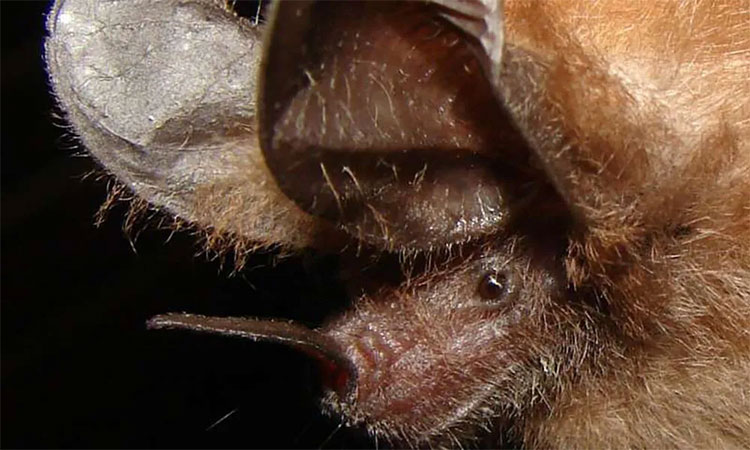Bats use leaves to ... 'mirrors' to find prey in the dark
On moonless nights in a tropical forest, bats easily penetrate the darkness, keep the insects lying silently on the leaves, something that seems impossible but is actually possible.
New experiments at the Smithsonian Tropical Research Institute (STRI) show that by changing their approach angle, leaf-nosed bats can use their sixth senses to find prey camouflaged by sound. These new findings are interesting for the evolution of predator interactions.
In fact, for years, researchers have suggested that bats cannot sense silent prey lying on leaves by echolocation. However, researchers have discovered how bats achieve the impossible recently.
By combining evidence from experiments using biological equipment to create and measure artificial signals, with evidence from the bat's high-speed video observations as they approach prey, the importance of corners Approach has been revealed.

Scientists have discovered how bats can catch insects in the dark.
Bats have an esper power that people cannot share. They flood an area with sound waves and then use information from reverberation to navigate in the environment. The signal reflected leaves echoed vigorously, covering the weaker echo from the resting insects. Therefore, in the thick foliage of a tropical forest, echoes from leaves can act as a mechanism for natural hiding for insects, called audio camouflage .
To understand how bats overcome sound camouflage and capture prey, the researchers aimed the sound waves at a leaf with and without insects from more than 500 locations to produce a full three-dimensional echo. At each location, they calculated the echo intensity for five different sound frequencies representing the frequency of the bat's call.
Researcher Inga Geipel and colleagues discovered that by approaching a bevelled leaf, bats could use their echolocation system to detect insects standing still in the dark.
Leaves with and without insects strongly reflect back to the sound if it emits from the front (from angles smaller than 30 degrees). When a bat approaches from these angles, it cannot find its prey when a strong echo from the leaves hides the echoes of insects. But Geipel and colleagues found that if the sound emanating from bevel angles is greater than 30 degrees, the sound is reflected off the source and the leaf acts as a mirror, like a lake reflecting the pulse forest. around at sunset or dawn. The approach angle makes a resting insect detectable.
Based on these experiments, Geipel and colleagues predicted that bats approach insects resting on leaves from angles of 42 to 78 degrees. These are the optimal corners to see if a leaf has insects on it.
Next, Geipel recorded actual bats at the Barro Colorado Island research station of STRI in Panama as they approached insects lying on artificial leaves. Using recordings from two high-speed cameras, the researcher reconstructed the three-dimensional flight of bats as they approached the prey and determined their location.
Geipel found that, as expected, nearly 80% of the access angles are located in the corners of the bats to help distinguish insects from leaves.
"This study changes our understanding of potential applications of echolocation. It has important implications for studying the interactions of predators and areas of ecology. learn and evolve feelings , 'Geipel emphasized.
- Bats Barbastella and mischievous hunting
- Giant pythons climb the tree swallowing bats
- Bats also know how to use hearing aids
- Why peanut leaves closed when it was dark
- Bats catch prey with technology ... missiles
- The history of mirrors
- How do bats spread disease globally?
- Two species of horse bats about to become extinct
- Why are leaves green?
- Find the world's fastest flying animal
- 8000 year history of mirrors
- Discover new bats on dogs in Panama and Ecuador
 Animal 'suffering' after hibernation
Animal 'suffering' after hibernation Why do goats climb well?
Why do goats climb well? Scientists were surprised to see chimpanzees eating turtles
Scientists were surprised to see chimpanzees eating turtles Giant catfish died deadly due to drought in Thailand
Giant catfish died deadly due to drought in Thailand